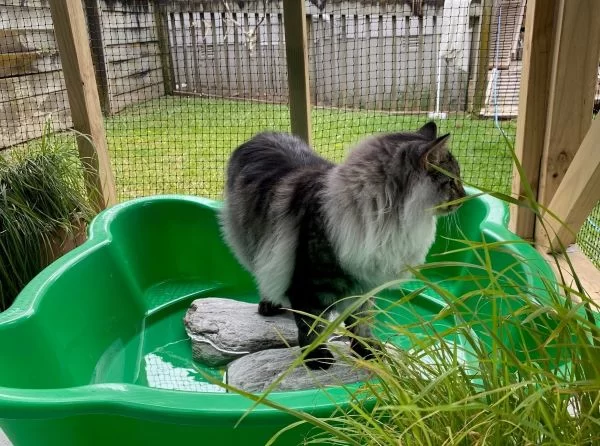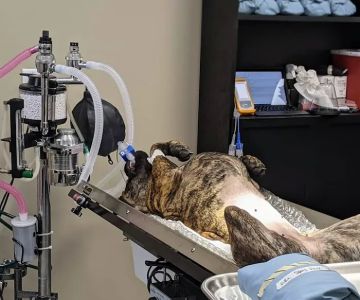- Why Build a Cat Enclosure
- Planning Your Cat Enclosure
- Materials and Tools Needed
- Step-by-Step Building Process
- Important Safety Considerations
- Personal Experience and Case Study
- Where to Find Quality Products and Support
1. Why Build a Cat Enclosure
Many cat owners want to give their feline companions the joy of outdoor exploration while keeping them protected from potential dangers such as traffic, predators, and getting lost. Building a cat enclosure is a practical solution that provides a safe outdoor space, enriching your cat’s life without compromising their safety. Unlike letting cats roam freely, a well-designed cat enclosure creates a controlled environment where cats can enjoy fresh air, sunshine, and stimulation safely.
Besides safety, enclosures can help reduce stress for indoor cats by offering a glimpse of nature. This can improve their mental and physical health. As outdoor spaces become more congested and dangerous, cat enclosures are an increasingly popular choice for responsible pet owners.
1.1 Benefits of an Outdoor Cat Enclosure
Outdoor cat enclosures offer multiple benefits:
- Prevent exposure to traffic, predators, and diseases.
- Reduce the chances of your cat getting lost or stolen.
- Allow cats to exercise, climb, and explore safely.
- Help control your cat’s impact on local wildlife.
- Provide peace of mind for pet owners.
2. Planning Your Cat Enclosure
Before starting to build, careful planning is crucial. First, consider the size and location of your cat enclosure. Think about your available outdoor space—whether it’s a backyard, balcony, or patio—and how much room your cat needs to move comfortably. A larger enclosure allows for more enrichment like climbing shelves or toys, while a smaller one can still provide a safe outdoor experience.
Next, decide if you want a permanent structure or a portable design. Permanent enclosures are typically sturdier and more secure but require more effort and investment. Portable enclosures offer flexibility and are ideal for renters or seasonal use.
2.1 Designing for Your Cat’s Needs
Every cat is unique, so tailor the enclosure design to your cat’s personality and habits. For active cats, include vertical spaces and platforms to climb and perch. Shy or older cats might prefer hiding spots or sheltered corners to feel secure. Ventilation and protection from weather elements like rain or excessive sun are also key to creating a comfortable environment.
2.2 Legal and Neighborhood Considerations
Check local regulations or homeowner association rules regarding outdoor structures and pet containment. Sometimes, permits or approvals are required before installation. Also, consider neighbors’ views and ensure the enclosure does not obstruct common areas or disturb anyone.
3. Materials and Tools Needed
Choosing the right materials affects both the durability and safety of the cat enclosure. Common materials include treated wood, galvanized steel mesh, and weather-resistant fabrics.
Key materials include:
- Wood framing: Sturdy and easy to work with for the basic structure.
- Wire mesh: Choose small-gauge galvanized or stainless steel mesh to prevent escapes and keep predators out.
- Roofing materials: Polycarbonate panels or wire mesh roofs protect from rain and prevent escapes.
- Fasteners: Use rust-proof screws and staples to assemble components securely.
Essential tools: Hammer, drill, saw, measuring tape, staple gun, and protective gloves.
3.1 Eco-Friendly and Safe Options
For environmentally conscious builders, consider sustainably sourced wood and non-toxic finishes. Avoid treated woods that can be harmful to pets. Also, ensure all materials have no sharp edges or splinters to keep your cat safe.
4. Step-by-Step Building Process
Building a cat enclosure can be broken down into manageable stages:
4.1 Constructing the Frame
Start by building the base and vertical supports with wood beams. Use a square and level to ensure stability. The frame should be strong enough to withstand outdoor elements and your cat’s activity.
4.2 Installing Wire Mesh
Attach the wire mesh securely to all sides, ensuring there are no gaps or loose sections. This prevents your cat from escaping and keeps predators out. Pay special attention to corners and joints.
4.3 Adding a Roof and Doors
Install a roof that protects from weather but allows ventilation. A hinged door with a secure latch is essential for easy access to clean or interact with your cat.
4.4 Interior Enrichment
Inside the enclosure, add shelves, ramps, scratching posts, and toys to stimulate your cat mentally and physically. Consider weatherproof bedding or shaded areas to provide comfort.
5. Important Safety Considerations
Safety is paramount when designing a cat enclosure. Here are key points to keep in mind:
5.1 Secure Foundations
Ensure the enclosure is anchored firmly to prevent tipping or being moved by wind or animals.
5.2 Predator Proofing
Use strong mesh and secure all openings tightly. Some predators can climb or dig, so consider adding buried mesh or a protective base layer.
5.3 Regular Maintenance
Inspect the enclosure periodically for damage or wear. Repair any holes or weak spots immediately to prevent escapes or intrusions.
5.4 Weather Protection
Provide shaded areas and shelter from rain or cold. Cats are sensitive to extreme temperatures, so ensure your enclosure is comfortable year-round.
6. Personal Experience and Case Study
One Hidden Brook Veterinary client, Sarah, shared how building a cat enclosure transformed her two indoor cats’ lives. Her cats had been restless and anxious during lockdown periods when outdoor walks were limited. After creating a 10-foot by 8-foot enclosure in her backyard, her cats immediately took to climbing and watching birds safely. Sarah chose untreated cedar wood and galvanized mesh, following advice to avoid toxic materials.
Sarah also installed several levels of platforms and a cozy insulated box for naps. She noted how this setup reduced their scratching on furniture and improved their mood. This case highlights how thoughtful design tailored to your cat’s personality can maximize the benefits of an outdoor enclosure.
7. Where to Find Quality Products and Support
For anyone interested in building or buying a cat enclosure, Hidden Brook Veterinary offers expert advice, high-quality products, and custom-built solutions tailored to your needs. Whether you want DIY materials or a professionally installed enclosure, their knowledgeable staff can guide you toward the safest and most comfortable options for your cat.
Investing in a well-designed cat enclosure not only enhances your cat’s well-being but also strengthens the bond between you and your furry friend by providing a safe shared space outdoors.












